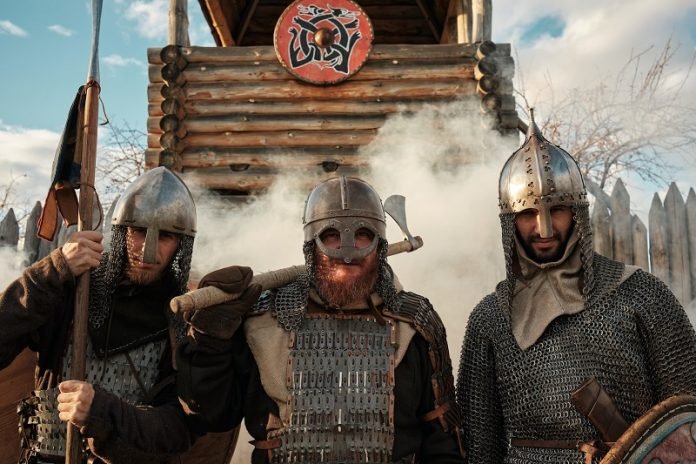
Long ago, Vikings weren’t just fierce fighters with beards; they also loved shiny treasures, especially silver.
All over Europe, we find places where Vikings buried lots of silver stuff, showing us how much they liked it.
Dr. Jane Kershaw, a smart person who studies old things at the University of Oxford, tells us that silver has been special to people for a very, very long time – even before the Vikings were around, starting from about 750 AD.
Silver was super important, even more than gold, in ancient places like Egypt thousands of years ago.
The first people to use silver money were from a place called Lydia, in Asia, about 2,600 years ago.
Looking at silver helps us understand how old civilizations moved around and changed, and even helps us rethink what we know about people from long ago.
Dr. Kershaw leads a project named SILVER, and they are checking out how Vikings used silver in their lives.
She thinks Vikings weren’t just about fighting in Western Europe; they were also big fans of the shiny stuff from Islamic lands that started becoming important in the same century.
Her research shows that Vikings might not have gotten silver from fights but from trading far to the East, way before we used to think they did.
Dr. Kershaw, with the help of Dr. Stephen Merkel and coin expert Jani Oravisjӓrvi, is using cool tools like lasers to look at tiny bits of silver coins and figure out where the silver came from.
They are finding out new things, like the Vikings traveling East around 750 AD, long before their known raids in the West.
The Vikings set up huge trade networks that stretched from North Africa to Scandinavia, trading silver for other goods.
Dr. Kershaw’s work is also teaching us that Vikings were really good at adapting to different cultures, like chameleons that change colors.
She hopes her work will help other researchers to learn more about the early days of the Vikings and other histories.
Another project, also called SILVER but looking at even older times, is run by Professor Francis Albarède. He’s studying ancient empires around the Mediterranean, like Greece, Persia, and Rome, to understand how money and trading worked back then.
His work says that making silver coins was a big deal for setting up democracies in the 5th century BC, because it helped regular people have a say in things.
Professor Albarède tells us about Greek soldiers who got paid in silver coins to fight for Persia. When these fighters came home rich, they became an important group that helped democracies grow.
Silver was moving all around the Mediterranean, and this movement helped places without silver mines have lots of it, which doesn’t make sense unless these mercenaries brought it home.
His team also figured out how to know where silver came from by looking at different kinds of silver and lead found in the metal.
Before, it was hard to tell which mines the silver came from just by looking at the coins. But by checking out the raw silver ore, they could see the differences more clearly.
Their research also hints at why people started using coins in the first place. Silver coins were easy to carry, didn’t rot, and were worth less than gold, making buying and selling things much faster and easier.
Especially in tough times, like wars, having coins made things simpler.
Professor Albarède thinks we can learn from the past about money and trade. Just like the ancient Greeks traded silver for food when they needed it, we still trade things today. And by looking back, we can also learn about how societies can go wrong when things aren’t fair for everyone.
Both projects are digging deep into history, using tiny clues from silver to uncover big stories about how people lived, traded, and shaped the world a long time ago.
Follow us on Twitter for more articles about this topic.
Source: KSR.



